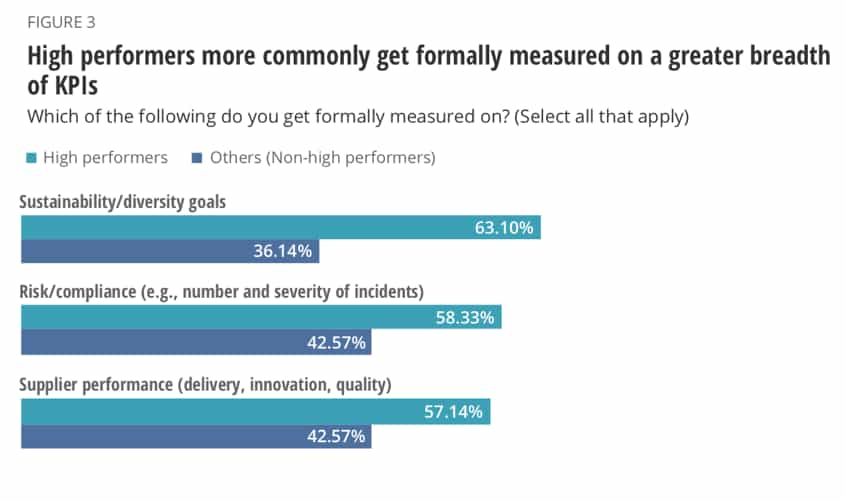For those that aren’t familiar, or like myself are more familiar with the symbol than the concept, the principle of Yin and Yang is a concept of dualism, used to explain “that all things exist as inseparable and contradictory opposites, for example, female-male, dark-light and old-young. The pairs of equal opposites attract and complement each other” (worldhistory.org 2018).
Procurement and Sustainability are two disciplines and business functions that exist in a perfectly harmonious contradiction. At their root, these two roles coexist with conflicting purposes, but function stronger together than they do apart, as they are — at times — seemingly contrary forces that actually are complementary, interconnected, and interdependent in any business.
Procurement is fundamentally centered around the act of acquisition and/or buying. Procurement can be seen as a primary propellant of production that inevitably leads to consumption.
Sustainability is fundamentally centered around the act of conservation. Sustainability can result in the sacrifice of profit or production in order to balance the well-being of people and the planet.
The above isn’t suggesting that procurement isn’t committed to sustainability, that sustainability doesn’t value the importance of procurement and/or that either of the two comes at the expense of the other. Procurement and Sustainability are disciplines and functions that need to do more than simply coexist to take a strong position in your organization’s value chain.
Procurement and Sustainability must remain mutually committed in their relationship, find areas of compromise and exploit opportunities of common gain.
Procurement Is Committed
Procurement, as an industry, is committed to positive growth and sustainable development.
“According to the 2020 Ovation Pulse, 92% of CPOs remain committed to their long-term goals. This, they say, includes value delivery through supplier- enabled innovation (SEI); sustainability through environmental, social and governance (ESG) goals; as well as agility through digitalization — all of which will enable the business to deliver on its growth agenda” (Procurement Leaders 2021).
At the crossroads of sustainability, technology, and the broader supplier base lies smart, sustainable, and scaling supply chain growth; growth that comes with a balance of people, planet, and profitability in mind.
Commitment from procurement is a great starting point, but in order to truly deliver on long-term goals, procurement teams will need to shift priorities, sacrifice some traditional procurement methods, acquire greater transformation/technology budgets, build a culture that excites change, and adopt modern solutions as a means to speed up time to delivery on ambitious objectives.
Chief Procurement Officers’ priorities seem to be changing with the times in order to further implement initiatives necessary to meet broader organizational goals. CPOs “gave supply chain sustainability a ranking of 7.2 out of 10, on average — an increase from 6.2 in 2020, according to Procurement Leaders’ CPO Planning Guide 2021” (Procurement Leaders 2021). This is, yet again, an affirmation that procurement leaders understand the importance of being a role player in broader sustainability initiatives and sustainable development goals.
High-performing procurement organizations follow up on sustainable procurement goals, ensuring that these are taken into account within KPI measurements. This is good for your procurement team to measure in order to drive sustainable development, but also provides a more nuanced picture of the value that procurement can create within the broader business. As seen below in the graphic taken from the Deloitte 2021 CPO Survey, one can easily determine that there is a large discrepancy in how KPIs central to sustainability & sustainable development (Diversity, risk/compliance, innovation, quality, etc.) are reported in high performing procurement teams vs. others

The complexity of sustainability and procurement is evolving. High-performing procurement organizations don’t fear change but embrace it as a core part of their business culture and strategy.
High-performing Procurement teams embrace Sustainability!
Sustainability Is So Much More in 2021
As mentioned above, the complexity of sustainability and procurement is evolving in modern times.
People, planet, and profitability remain the three core pillars to sustainability, but their definitions are becoming broader and their impact upon global value chains more significant.
Internal & external pressure from stakeholders, leadership teams, executive boards, investors, and society-at-large are evolving from demands to legislation. This is visible in Europe and materialized in examples like EU Taxonomy regulations and/or the German Supply Chain Act putting the spotlight on climate impact and supply chain compliance. Diversity has also been accelerated as a top priority in sustainability and procurement strategies alike. Supplier diversity programs are a growing priority, rapidly advancing on global corporate agendas after a year-and-half packed with protests for global equality.
Simply… Sustainability is so much more in 2021.
Sustainability has evolved from a business discipline applied as a means to conserve, to an integrated strategy — applied in the organization across functions— to realize social, financial, and environmental change.
5 Quick Tips to Embed Sustainability Into Procurement
Without an embedded approach to sustainability and procurement, it’s very difficult to meet increasing requirements on sustainability reporting, supply chain visibility, transparency, traceability, and governance/compliance.
As your company’s Yin & Yang, procurement and sustainability are stronger together than they are by themselves, so below are a few quick tips to embed sustainability into your procurement strategy, process, and operations.
1. Change From Within
‘Be the change you want to see in the world”. — Gandhi
This may seem a bit cheesy, but when it comes to embedding sustainability into your procurement organization, strategy, process, and operations it’s ok to be visionary. You may very well have to throw out the old playbook and rewrite it from scratch. Whatever you do, make sure that you aren’t afraid to change from within, meaning that you have to open the hood and inspect the engine in your own procurement organization before aiming to scale sustainable development in the broader supply chain.
A perfect example of this is starting a supplier diversity program and maintaining diversity goals. In order to lead with diversity, procurement as an industry will have to diversify from the outside in; beginning with their own teams and scaling that change within supplier networks.
2. Create a Sustainability North Star Metric
A North Star Metric (NSM) is the center of any growth strategy. Often applied as a key metric for growth hacking and the creation of exponential growth in tech companies, it could also be applied to procurement in order to keep sustainable development at the center of overall procurement goals & targets. Consequently, Sustainability or Sustainable Development as a North Star Metric in Procurement keeps sustainability in focus within all procurement activities no matter small or large.
The actual metric will need to be determined by your team, and measured over time. Some examples of North Star Metrics in leading tech companies are as follows:
An example of a North Star Metric for Sustainable Development in procurement could be Number of Diverse Suppliers or Number of Compliant Suppliers.
Learn more on Finding Your Procurement Teams North Star Metric
3. Shoot for the Moon
Goals and targets for sustainability should be big and ambitious.
As W. Clement Stone quote goes, “Shoot for the moon. Even if you miss, you’ll land among the stars.” Goals need to be realistic, but you also need to be ambitious in order to achieve real material change.
4. Build Integrated Business Cases
In order to meet ambitious goals and targets on sustainable development in procurement and the global supply chain, procurement teams will need more resources in the form of new people, processes, and modern technology.
All of these things will require investment, which will require your fair slice of the yearly budget.
Tying investment business cases back to a broader business strategy and/or cross-functional ROI is always a good idea in order to display the mutually added value brought by new investments. The point here: any business case for procurement systems and/or resources will be more impactful if tied back to a sustainability strategy/goal.
5. Sustainability KPIs & Reporting
You can’t manage what you can’t measure. What you can’t measure you can’t improve upon.
As mentioned earlier in the article, high-performing procurement organizations focus on a broader and more holistic approach to KPI measurement. Following up on and reporting upon social, environmental, quality, and risk impacts of the global supply chain are respected with the same level of importance as cost and savings.
Some low-hanging fruit for Sustainability reporting is:
- Supplier Base Compliance (Supplier CoC, Certs, Policies, etc.)
- Supplier Diversity Segmentation (Reporting on # and variety of Diverse Suppliers)
- Tier-1 Emissions (Broken down per category: CO2, Electricity, Water etc.)
- Risk and Supplier Quality Reporting (Incidents, NCN, Quality Issues, etc.)













